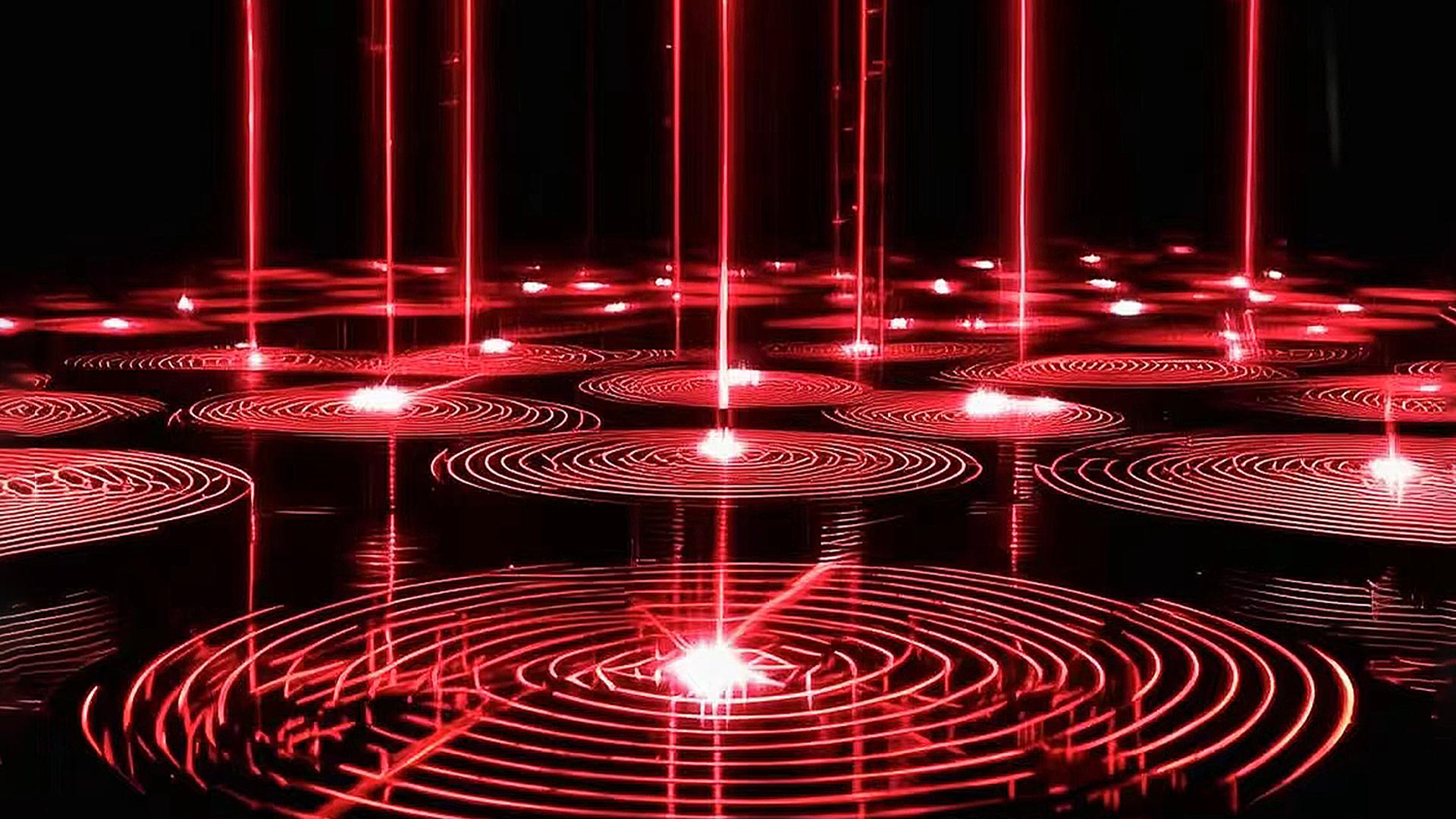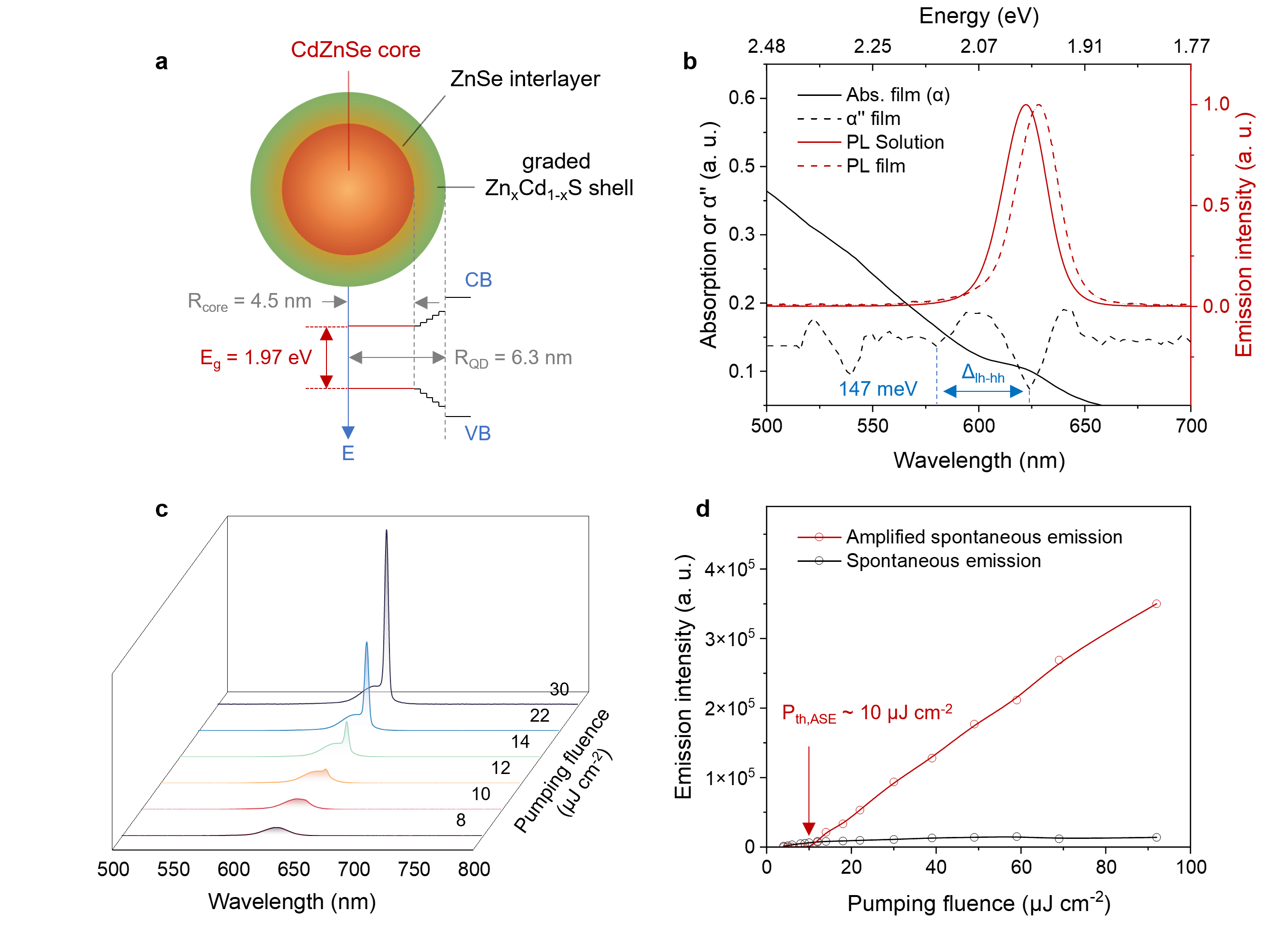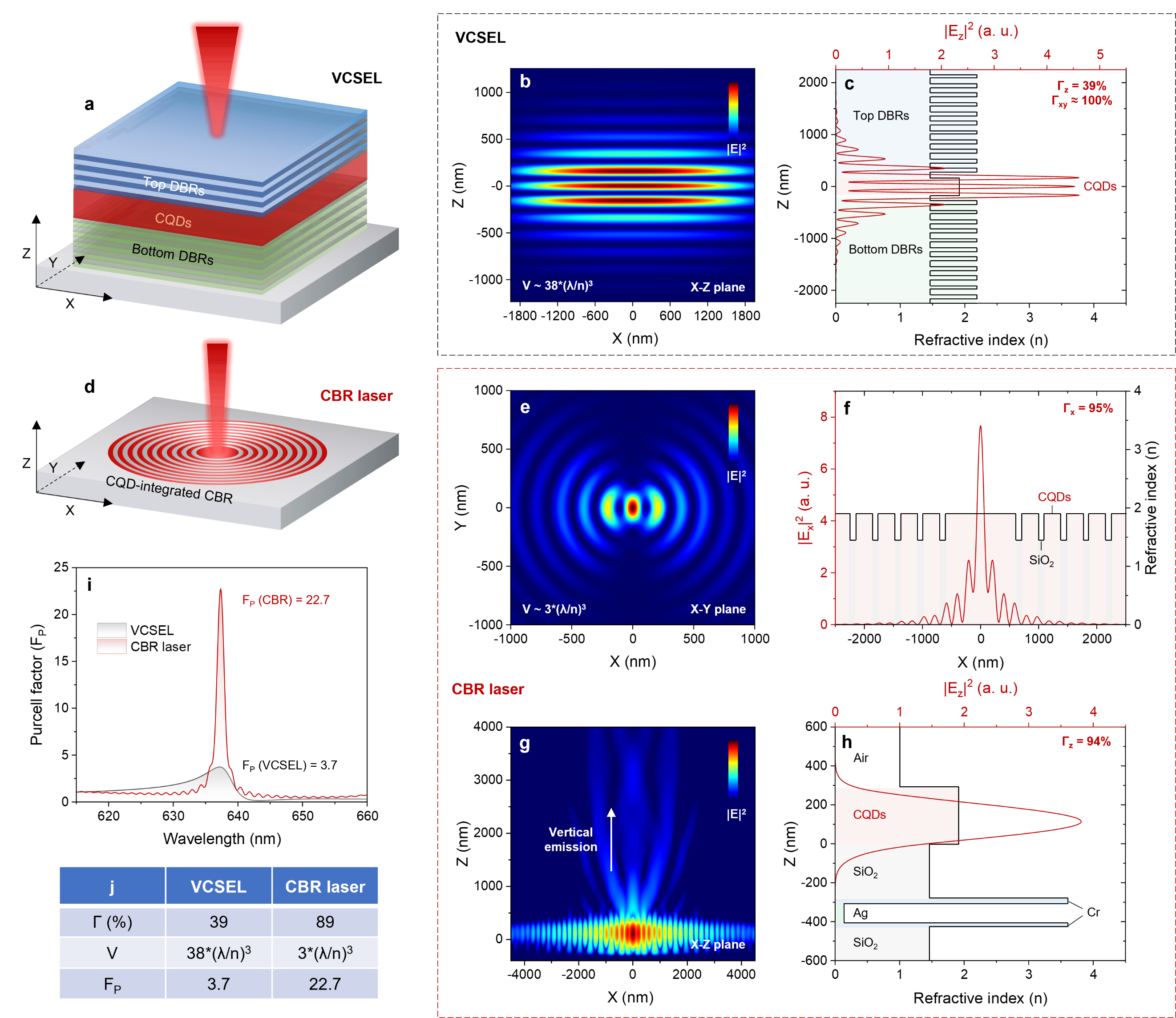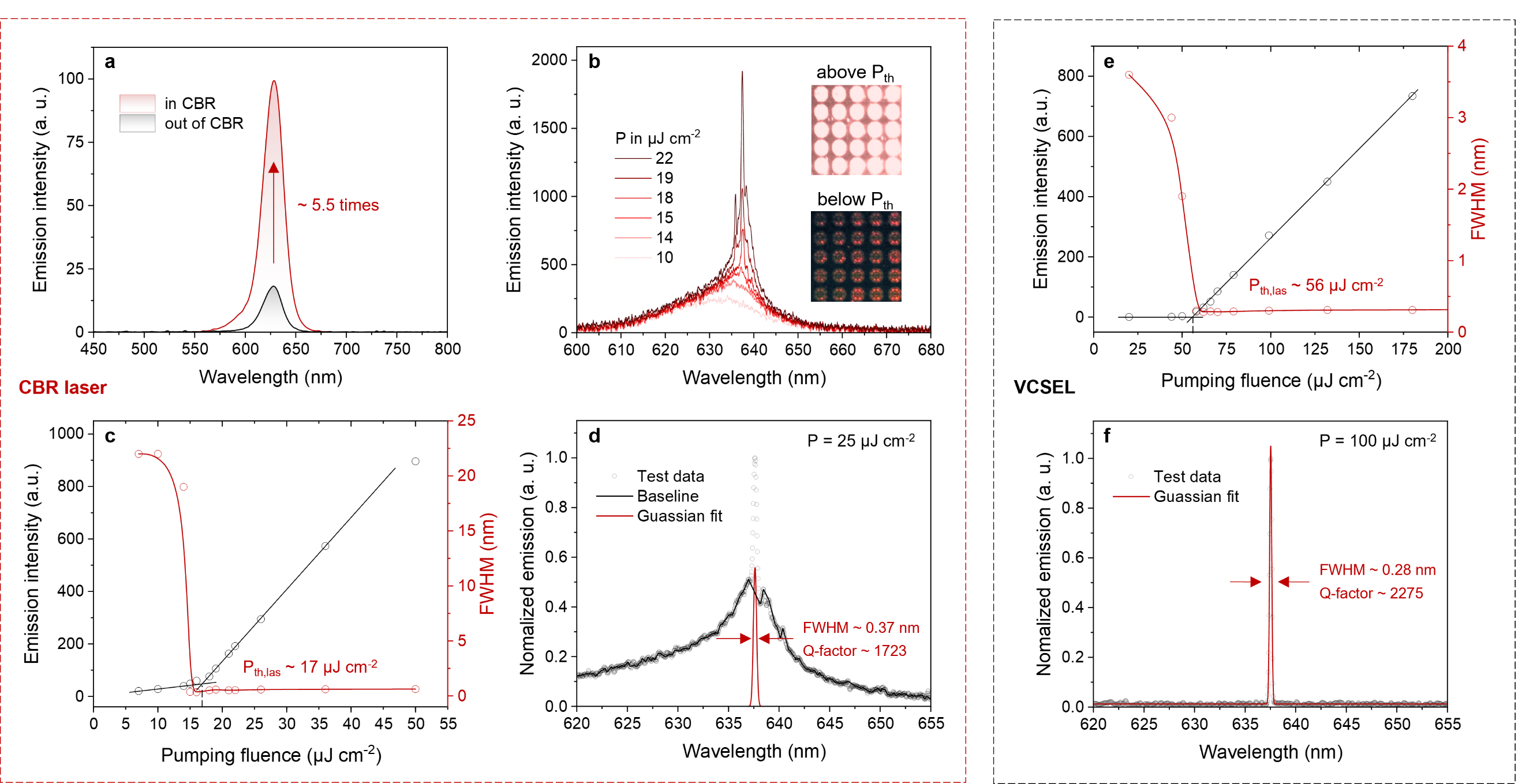Colloidal quantum dots (CQDs) have emerged as promising gain media for lasers, offering low lasing thresholds, compatibility with low-cost solution-based synthesis and processing methods, and tunable emission across a wide spectral range. These advantages make CQD lasers potential game-changers for non-epitaxial semiconductor lasers.
Surface-emitting lasers (SELs), characterized by narrow beam divergence, high efficiency, and compatibility with two-dimensional array integration, have found widespread applications in display, sensing, and communication. Thus, developing CQD-based SEL arrays offers a pathway to low-cost, highly integrable, and full-color coherent light sources.
Despite their potential, optically pumped CQD lasers still face several challenges. These include a high lasing threshold, often requiring femtosecond pumping sources. To enhance their practical utility, it is necessary to reduce the lasing threshold and improve compatibility with more cost-effective picosecond, nanosecond, or quasi-continuous-wave pumping sources. Additionally, CQD lasers suffer from poor operational stability, as the high lasing threshold imposes significant strain on the stability of CQDs under intense laser pumping.
To date, no CQD laser has been reported to operate continuously for more than 10 hours to date. Furthermore, integration density is limited by the inadequate optical field confinement in conventional vertical-cavity surface-emitting lasers (VCSELs), which results in a large mode volume (V). Consequently, reported CQD SEL arrays have achieved integration densities of only 100 to 300 pixels-per-inch (PPI), highlighting the need for further advancements in this area.

A collaborative research team led by Professor Kai Wang and Chair Professor Xiao Wei Sun from the Department of Electronic and Electrical Engineering at the Southern University of Science and Technology (SUSTech), Professor Hoi Wai Choi from The University of Hong Kong (HKU) and Associate Professor Dan Wu from Shenzhen Technology University (SZTU) has developed high-performance CQD surface-emitting laser array based on circular Bragg resonator (CBR). By leveraging high-quality CQD material with a low gain threshold and high stability, combined with a circular Bragg resonator (CBR) cavity offering strong optical confinement, the CQD CBR laser array features a low lasing threshold, high pixel density (2100 PPI), and a remarkable 1000-hour operation lifetime (3.63 × 108 pulses) at room temperature. This breakthrough holds significant promise for advancing practical applications of CQD lasers in the future.
Their related work has been published in Light: Science & Applications with the title “Low-threshold surface-emitting colloidal quantum-dot circular Bragg laser array”.
The team developed a CQD-based SEL array with low threshold, high stability (continuous operation for 1000 hours), and high integration density (2100 PPI). This achievement was made possible by simultaneously improving both the CQD material and the laser cavity design. Specifically, they engineered CQD materials with an alloyed graded core-shell structure and integrated them with a CBR that supports strong optical field confinement.
A low lasing threshold and high optical gain stability in CQD are prerequisites for achieving high-performance CQD lasing. To address these needs, the researchers developed a new type of CQD material with a graded alloyed core-shell structure of CdZnSe/ZnSe/ZnxCd1-xS (Figure 1a). By smoothing the exciton confinement potential within the CQDs, they effectively suppressed the Auger recombination in the multi-exciton regime, contributing to a lower lasing threshold and enhanced stability. An analysis of the second-order differential absorption spectrum of the CQDs (Figure 1b) revealed a large light-heavy hole splitting energy of 147 meV, significantly exceeding the thermal energy at room temperature (kBT ≈ 26 meV). This indicates that thermally induced intra-band transition in the CQDs can be effectively suppressed, further enhancing the stability of the optical gain.
Under sub-nanosecond pulsed laser pumping, the amplified spontaneous emission (ASE) threshold of the CQDs was as low as 10 μJ/cm2 (Figures 1c and 1d), laying a solid foundation for achieving low-threshold lasing.

Figure 1. (a) A schematic illustrating the graded alloyed core-shell structure of CdZnSe/ZnSe/ZnxCd1-xS CQDs. (b) Spectra of the CQDs, including PL, linear absorption, and second-order differential absorption. (c) Evolution of PL spectra of the CQDs with increasing pump intensity under sub-nanosecond pulsed laser excitation. (d) The dependence of spontaneous emission and ASE intensity of the CQDs on pump intensity.
To realize high-performance and compactly integrated CQD SEL arrays, efficient manipulation of the optical field distribution within the CQD laser cavity is essential. This requires effective coupling between the optical field and the CQD gain medium (evaluated by the optical confinement factor Γ), strong optical field confinement (evaluated by the mode volume V), and a strong Purcell effect that matches the CQD gain spectrum (evaluated by the Purcell factor FP).
However, CQD VCSELs, as microcavity systems based on one-dimensional photonic crystal structures, only provide effective optical confinement along the Z-axis. This limitation leaves significant room for improvement in the above three aspects. Therefore, the researchers developed a novel CQD CBR laser that utilizes a circular Bragg grating structure in the XY plane, upgrading the optical field confinement from one-dimensional (Z-axis) to two-dimensional (XY plane) (Figure 2).
In this device, CQDs not only serve as the gain medium but also, together with the relatively low-refractive-index silicon dioxide, form a complete CBR resonant cavity. Numerical simulations based on the finite-difference time-domain (FDTD) method show that, thanks to its strong optical confinement, the mode volume V in the CBR cavity is reduced by an order of magnitude compared to that in CQD VCSEL, and both the optical confinement factor Γ and the Purcell factor FP are significantly improved (Figure 2).

Figure 2. Comparison of the optical field distribution, Purcell factor FP, and optical confinement factor Γ in CQD VCSEL and CQD CBR laser based on FDTD simulations.
The significantly enhanced optical confinement factor Γ and Purcell factor FP in the CBR cavity enable the CQD CBR laser to achieve a much lower lasing threshold (17 μJ/cm2) compared to the CQD VCSEL (56 μJ/cm2) under 0.3-ns pulsed excitation (Figure 3). Meanwhile, the small mode volume V resulting from strong optical confinement enables high-density array integration of CQD CBR lasers, with an integration density of up to 2100 PPI—the highest level among current CQD SEL arrays.

Figure 3. Comparison of the lasing characteristics of CQD VCSEL and CQD CBR laser.
Moreover, benefiting from high-quality CQD material and the CBR cavity, the CQD CBR laser exhibits excellent operational stability. It has achieved a continuous operating lifetime of 1000 hours at room temperature, corresponding to 360 million stable pulsed lasing cycles, both of which represent the best values reported for solution-processed nanocrystal lasers (Figure 4).

Figure 4. Lasing stability of CQD lasers. (a) Comparison of lasing stability between CQD VCSEL and CQD CBR laser. (b) Statistics of lasing stability for reported solution-processed nanocrystal (CQD and colloidal quantum well) lasers.
This work provides crucial insights into how efficient optical field manipulation within microcavities improves the lasing properties of CQDs. By combining high-quality CQD material with a CBR cavity featuring strong optical field confinement, the researchers have developed a CQD SEL array that combines a low lasing threshold, high integration density, and exceptional stability. This breakthrough overcomes the current technical bottlenecks of CQD lasers, particularly in terms of integration density and operational stability, laying a solid foundation for the realization of diode-pumped and even electrically pumped CQD lasers.
Yangzhi Tan, a joint Ph.D. student of SUSTech and HKU, is the first author of this paper. Professor Kai Wang, Chair Professor Xiao Wei Sun, Professor Hoi Wai Choi, and Associate Professor Dan Wu are the co-corresponding authors. SUSTech is the primary corresponding institution.
Paper link: https://doi.org/10.1038/s41377-024-01714-9
To read all stories about SUSTech science, subscribe to the monthly SUSTech Newsletter.
Proofread ByAdrian Cremin, Yingying XIA
Photo ByDepartment of Electronic and Electrical Engineering